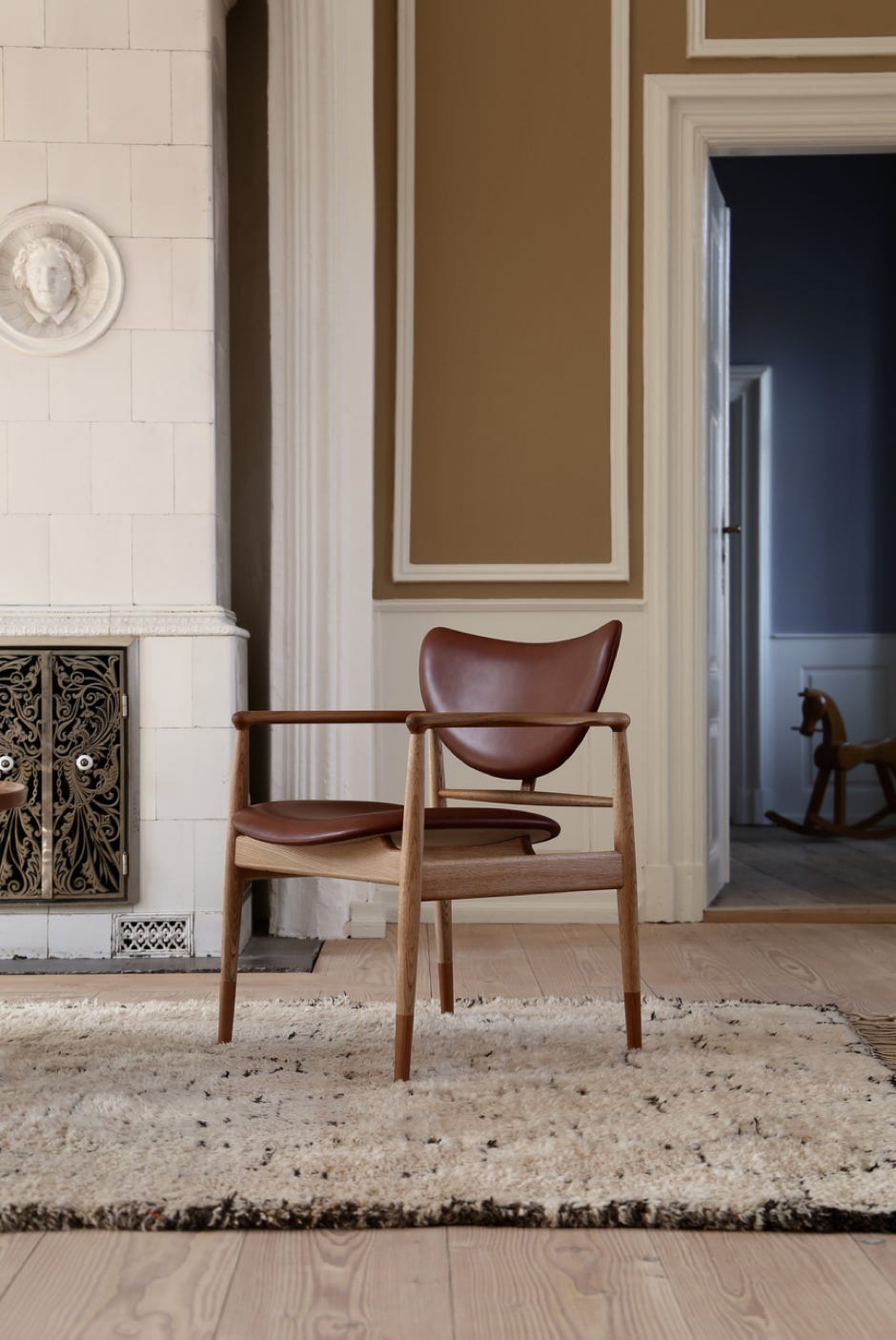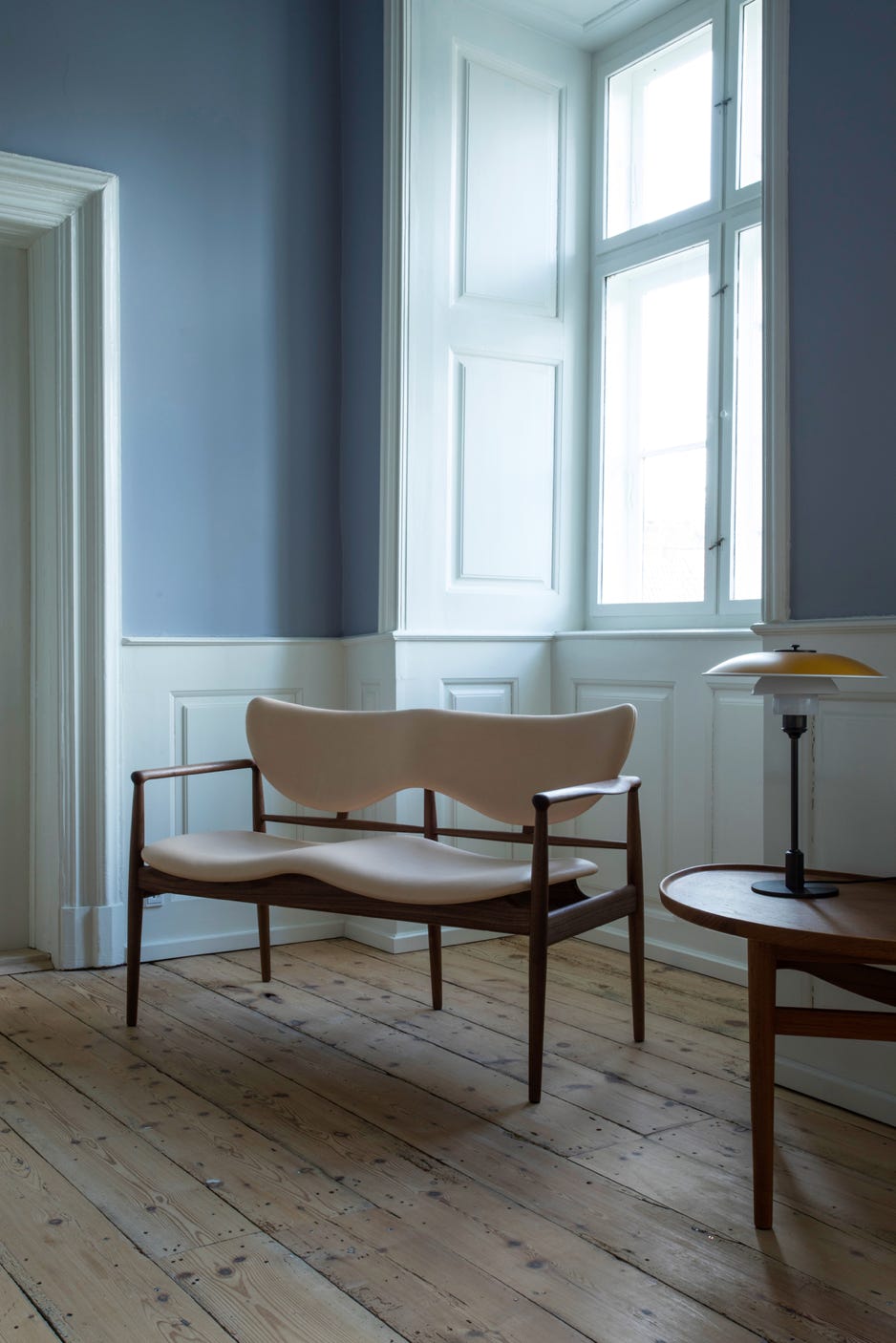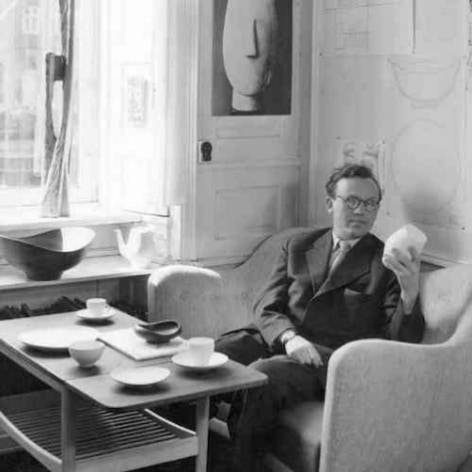15% off with DESIGN15


The 48 Chair is easily recognizable because of Finn Juhl's characteristic and sculptural shapes and delicate details. The chair embrace the seated person while the rounded surfaces are shaped to fit the gravity of the resting body and its proportions. The organically shaped seat and backrest, upholstered in fabric or leather, are raised from the carrying frame in an almost demonstrative manner. Visually this lifts the seated person, making it appear as if the law of gravity has been defeated.
Additionally, the 48 Series is characterized by the use of multiple materials. Today, it is rare to see furniture that employs two different types of wood. This type of contrast has been left almost entirely to Finn Juhl despite the many years that have passed. The 48 chair is available in oak with armrests and toes in teak and a version entirely in walnut. The chair is upholstered with either fabric or leather.
Chair W69 x D63 x H80 cm – seat height 44cm
Sofa bench W125 x D63 x H80 cm – seat height 44cm
Wood oak + walnut or walnut
48 Chair
from
48 sofa-bench
from









Finn Juhl

As a teenager, Finn Juhl (1912-1989) wanted to become an art historian, having a passion for the fine arts since childhood. His father stopped him and Finn Juhl started architectural studies. Later, when his fame as a designer of furniture acquired, he speaks of himself as an autodidact, in reference to this upset vocation that forced him to walk intellectually on a lonely way. His style owes much to this singular trajectory, with its non academic interpretation of art visible in his work. Finn Juhl started his studies in 1930, a key period which saw the birth of modern design and furniture.
His modern offices in central Copenhagen was greeting his visitors with a huge Japanese fish in paper, symbol of imagination. Rather than thinking in terms of practical construction, Finn Juhl had the mind-set of a sculptor, when he shaped a piece of furniture. In the 1940s and 1950s, this way of working had never been seen before. His ambition was to design furniture with movement and life.
Juhl took pride in making both the structurally supportive elements of the furniture and the seated person look as though they are floating. In some of his chairs, the backrest and the seat are almost invisibly joined, as if they were clouds floating through the room.
In creating his furniture, Finn Juhl worked with two elements: The carrying element, and the carried. He eventually became known for his special ability to separate the bearing parts from the borne. This is one of many examples of how he broke free from conventional working methods and found his inspiration in art.
Ce site web utilise les cookies techniques pour fonctionner.
Vous pouvez les refuser, mais perdrez alors la possibilité d'acheter.
OK
Refuser